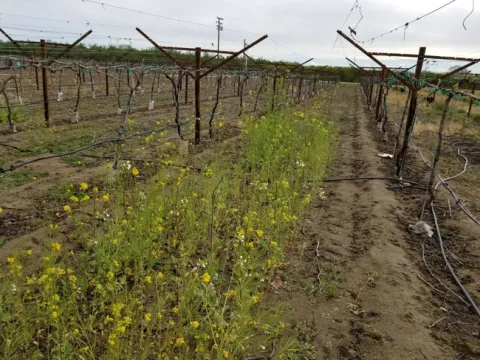Guide to a Cover Crop Demo

Growers throughout the country and around the world plant a wide range of cover crops for a variety of reasons. Cover crops can reduce soil compaction, improve water infiltration, improve soil structure, and feed soil microbes: they encourage a healthier and more diverse soil ecosystem.
To see how cover crops would do in the dry southern San Joaquin Valley, climate smart CES Shulamit Shroder planted 5 common cover crop mixes at the UC research farm in Shafter, CA last November.
The plan was to hold a field day in March, to show local growers what these cover crop mixes looked like and how they could fit into their agricultural operations.
The COVID-19 pandemic had other ideas, though. Instead of hosting a field day, she created a guide to the cover crop mixes, which is posted here.
The cover crop mixes were:
- Annual Plow Down Mix: fava beans, field peas, common vetch, and cayuse oats
- Erosion Control Mix: annual ryegrass, barley, and crimson clover
- Soil Cracker Mix: triticale, peas, white mustard, daikon radish, and common vetch
- Clover Mix: rose clover, crimson clover, medic, balansa clover, Persian clover, berseem clover
- Mustard Pollinator Mix: canola, white mustard, yellow mustard, and daikon radish
She planted each mix in an open field and in between table grapevines, to demonstrate the feasibility of including cover crops in a perennial cropping system.
Click on the link below to see how the various cover crop mixes performed!
